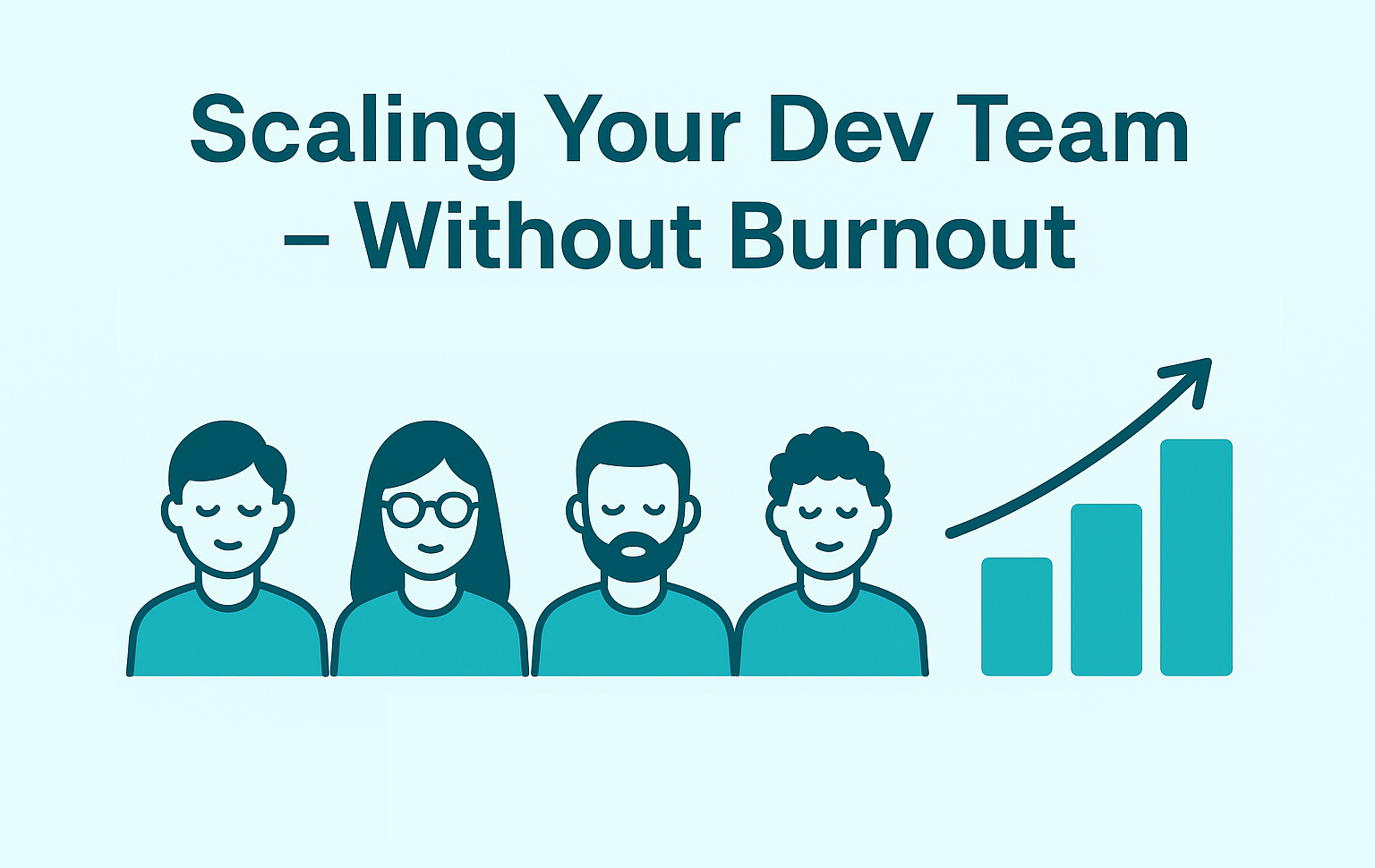⚡ Growth is great – but it can easily push your team to the edge. One CTO told me:
“We signed a major new client, and within a week our roadmap had doubled. People were working weekends just to keep up.”
So how do companies usually approach scaling development?
There are, of course, many options – like improving processes or better planning. But these have their limits. When growth accelerates, you’ll almost always need to expand your team’s capacity. In practice, most decisions boil down to three main paths:
1️⃣ Hiring new in-house developers
Pros: Deep knowledge of company culture, long-term loyalty, strong understanding of the product.
Cons: Slow and costly hiring process, difficult to scale quickly.
💬 As one CTO put it: “Our HR team turned into full-time headhunters, and development was still falling behind.”
2️⃣ Outsourcing the entire development
Pros: Fast scaling, flexible capacity, no burden of recruitment or infrastructure.
Cons: Risk of losing know-how, less control over the team, more complex communication and integration.
3️⃣ Engaging external specialists (contractors)
Pros: Quick access to expertise, great for short-term projects or niche technologies.
Cons: Weaker long-term connection to the company, higher turnover, harder to ensure continuity.
⚖️ So where’s the balance?
Each model has its strengths and weaknesses. Experienced companies look for solutions that combine the best of both internal and external worlds.
👉 That’s where FlexDev comes in – a flexible developer and a team in one.
FlexDev in Practice
Advantages:
✅ Quick integration without heavy admin
✅ Flexible capacity without losing control
✅ Access to expertise without burning out your people
Disadvantages:
⚠️ Requires clear definition of scope and goals
💡 FlexDev helps companies scale sustainably – without compromise.

